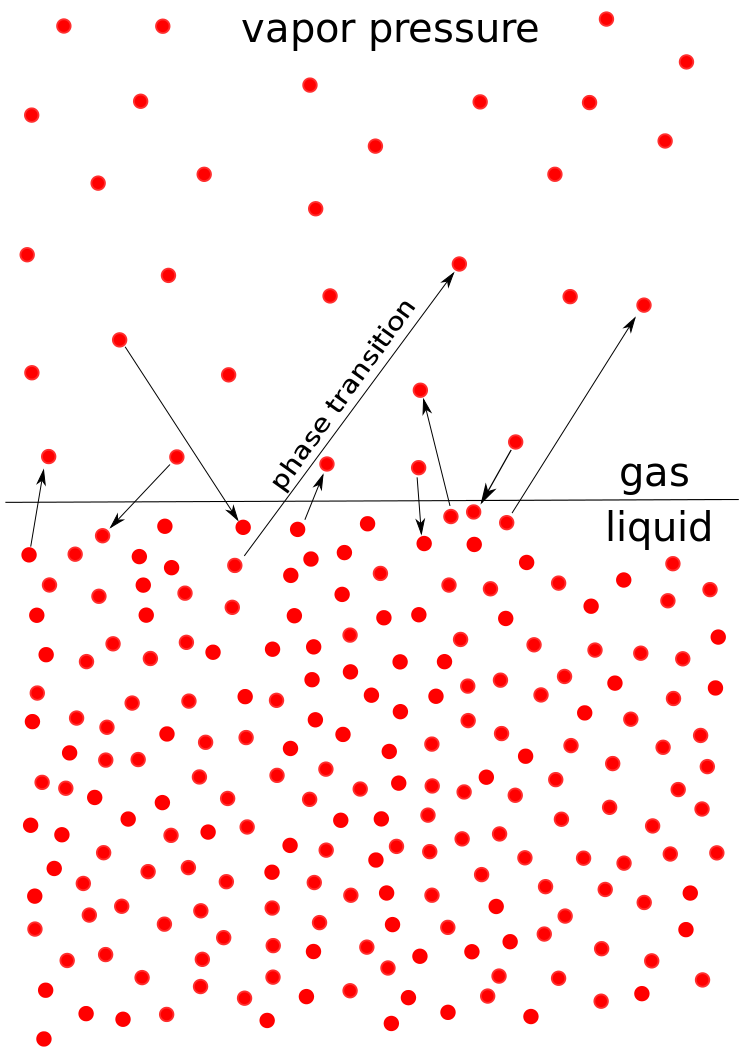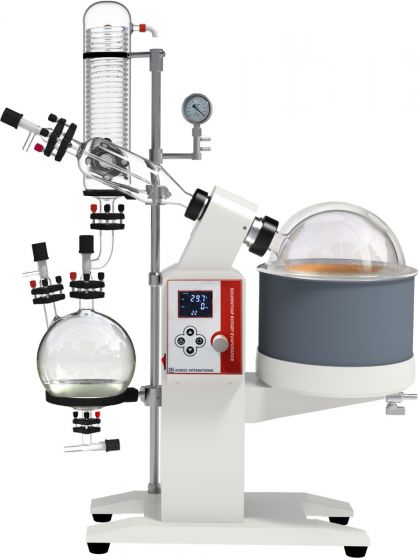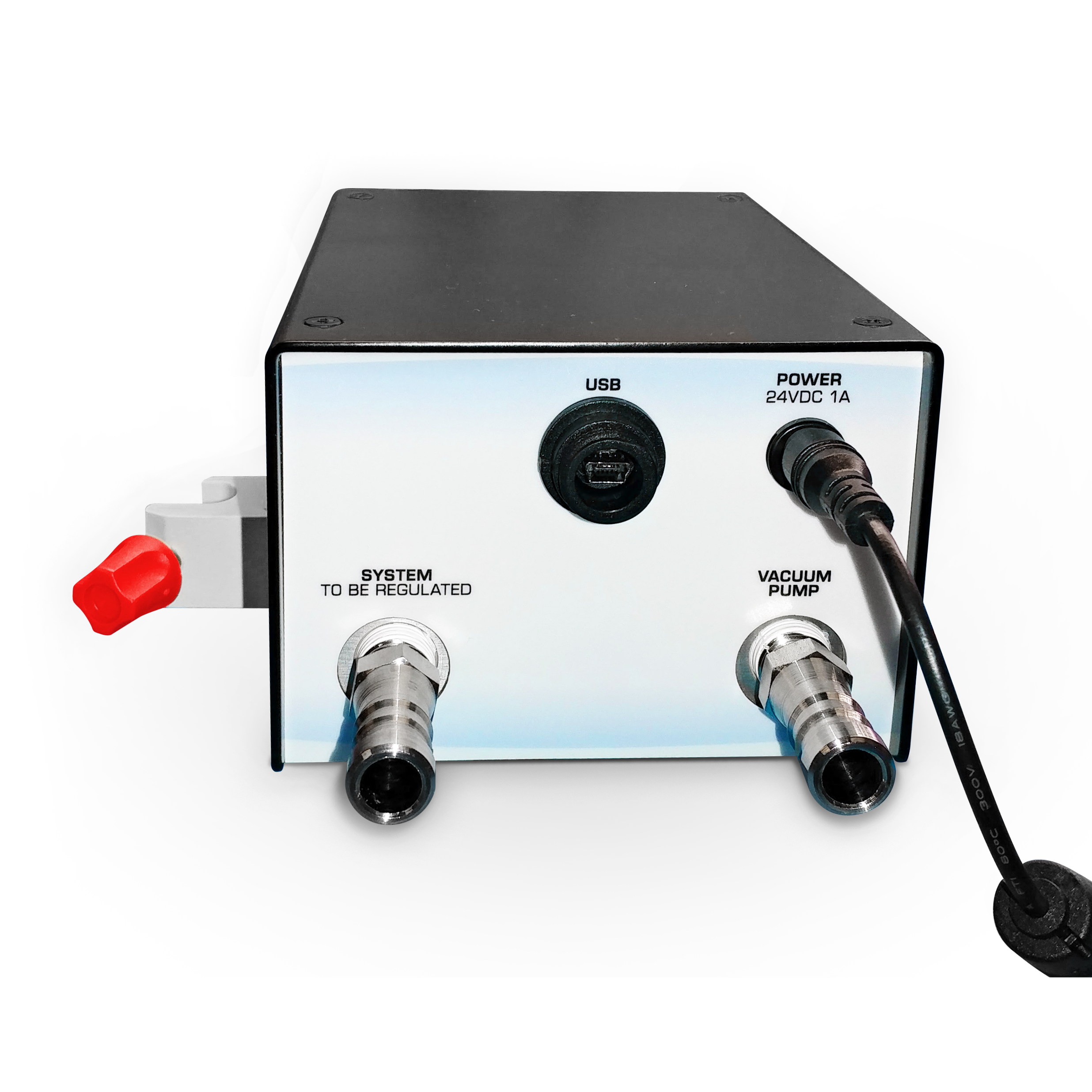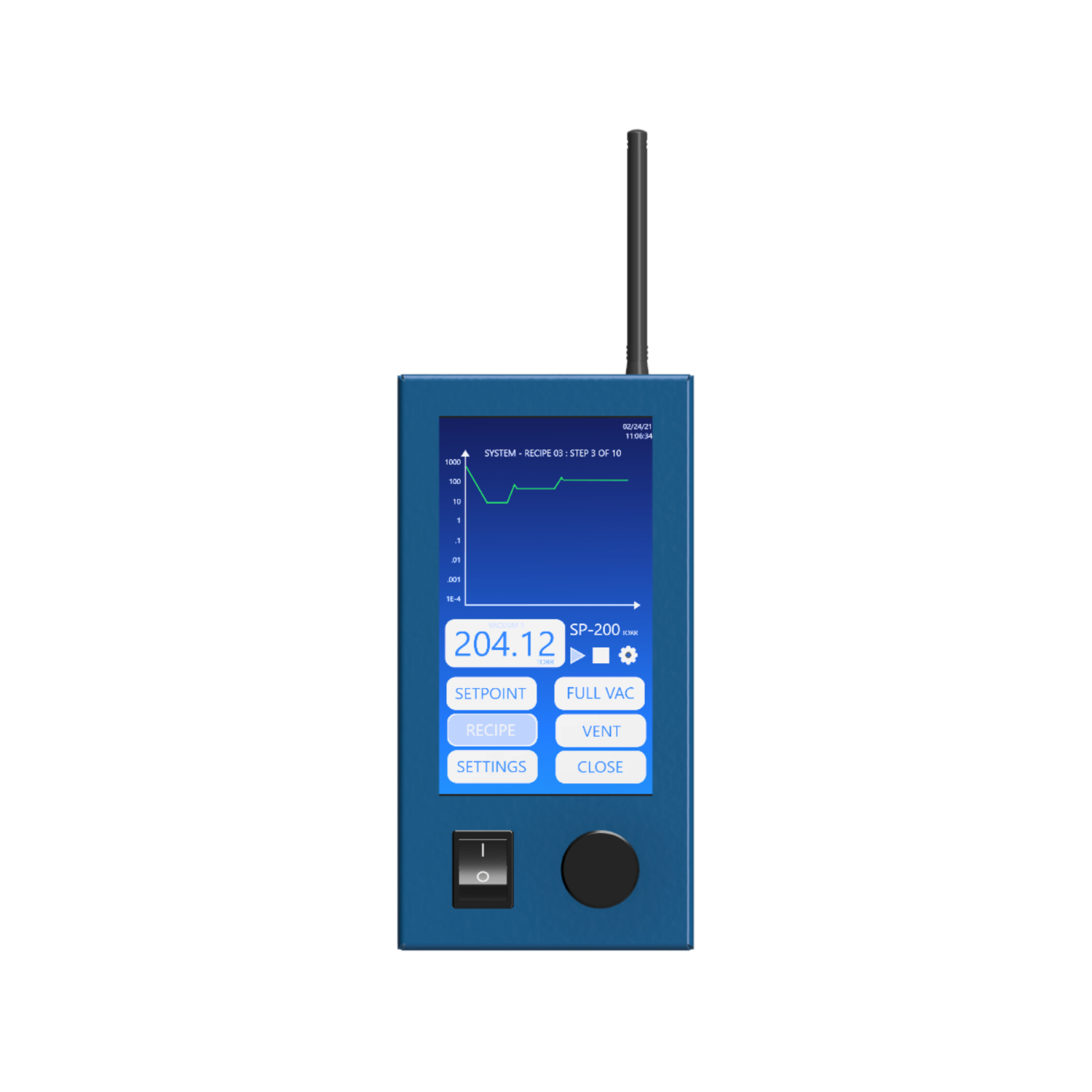Description
Ai SolventVap 5L Rotary Evaporator | Motorized Lift
Product Description
The Ai SolventVap 5L Rotary Evaporator is ETL tested to UL/CSA standards. This certification is required by many municipalities, and it also demonstrates a higher standard of equipment safety. The 5 liter rotary evaporator comes with all PTFE valves for solvent-resistant operations and includes vertical glassware and digital temperature/rotation controls.
Rapid Heating: Its optimized bath volume allows for rapid heat-up times.
High Efficiency: The condenser unit has specially designed glass tubes that utilize surface area for extreme efficiency.
Delivers reliable and reproducible process results that are usually reserved for more costly systems.
Safety Features: dry-run protection, water bath over-temperature shut-off protection, and fuse protection
The Ai SolventVap 5L Rotary Evaporator features a specially designed motor and worm gear, which provides constant rotation at speeds from 10 to 180 rpm.
- As the flask containing the solvent is rotated, it continually transfers a thin layer of liquid over the entire inner surface. This gives a very large surface area for evaporation, which is driven by the gentle heating of the water bath.
- The rotating system is fitted with a special seal that allows the apparatus to be placed under vacuum, effectively reducing the boiling point of the solvents and removing the vapor phase, making the process much more efficient.
- Each unit is also equipped with an easy-to-use vacuum release and a continuous feed system, which allows solvent to be constantly drawn into the rotating flask without needing to stop the operation. DigiVac recommends the addition of a Vapor Pressure Controller to help you automated your evaporation process.
Digital water bath operates from ambient temperature to 99C (210F) with PID temperature control stepping at 0.1C increments. Heating coils are located directly inside the pan for the most efficient heating possible. A built-in overheat protector will shut down power, should the controller fail.
Standard Glassware Set includes 1.32 gallon (5 liters) round-bottomed evaporating flask, 0.79 gallon (3 liters) round-bottomed receiving flask, and vertical condenser. Rotary evaporators with vertical glass condenser for are great for distillation of solvents with higher boiling points..
DigiVac Recommendations
Vacuum Control: VPC with VPPM Software for running recipes or RAMP control or the SNAP Vacuum Controller with onboard Automatic Process Control and Recipe Control to support SOP development
Chillers: Polyscience -40C Refrigerated Circulator | Ai -30°C 10L Recirculating Chiller
Features
- ETL tested to UL and CSA standards. CE certification optional.
- Solvent-resistant PTFE and Viton gaskets, ensuring long time operation.
- Water bath cover enhances safety by protecting evaporating flask and the material inside; it gives you uniform temperature inside evaporation flask as well as energy saving by reducing heat loss. It also creates a better lab environment by preventing heat and humidity from escaping.
- Specialized motor with extremely compact, intermeshed worm and worm gear provides precise driving for very quiet, vibration-free operation.
- Downward-condensing vacuum connection design ensures safe vacuum operation.
- Motorized water bath lifting for precise control.
- Easy, straight-forward visual operation with digital speed and temperature display.
- PID temperature controller ensures accurate temperature control is maintained.
Ai SolventVap 5L Rotary Evaporator package Includes:
| Part description | Quantity |
Part image |
| Ai SolventVap 1.3-gallon rotary evaporator and water bath | 1 set | |
| Vapor filtering bottle | 1 pc | |
| Vertical condenser with 2 chilling water ports and 1 vacuum port, glass | 1 pc | |
| 5L round shaped rotating evaporating flask, glass | 1 pc | |
| 3L receiving flask with detachable drain port | 1 pc | |
| Three-way tee vapor buffering flask, glass | 1 pc | |
| Glass receiving flask & condenser connector elbow with PTFE open/close switch | 1 set |  |
Receiving flask glass vacuum port with PTFE open/close valve |
1 set | |
Glass material feeding port with PTFE open/close valve |
1 set | .jpg) |
| Glass vapor duct with seal (pre-installed) | 1 pc |  |
| PTFE vacuum sealing kit (pre-installed) | 2 pcs | |
| PTFE extension feeding hose | 1 pc |  |
| Stainless steel pole | 1 pc |  |
| Mechanical vacuum gauge with 2 hose barb connectors | 1 pc | |
| Rubber-wrapped condenser and receiving flask support and bracket | 3 pcs |   |
| Flask quick clamp (4 smaller pcs for condenser, receiving flask and feeder, 1 larger pc for 3-way flask) & oring | 6 sets | |
| GL14 connector | 3 pcs |  |
| Allen key and backup inner hex screws | 4 pcs |  |
| NEMA L5-30 30A 125V power plug | Installed on 110V unit | |
| Ai plexiglass water bath cover for SolventVap 5L | 1 pc |  |
| Users manual | 1 pc |  |
Resources
A rotary evaporator is a device used in chemical laboratories for the efficient and gentle removal of solvents from samples by evaporation. The process of rotary evaporation is most often used to separate solvents with low boiling points, such a n-hexane or ethyl acetate, from compounds which are solid at room temperature and pressure. However, careful application also allows for the removal of a solvent from a sample containing a liquid compound, if there is minimal co-evaporation (azeotropic behavior) and a sufficient difference in boiling points at the chosen temperature and reduced pressure.


Example: The following table is a list of a variety of substances ordered by increasing vapor pressure (in absolute units).
.gif)

Safety Notice
Your safety is important to us! Please use caution when operating. Users of glass reaction equipment must take all necessary precautions to avoid contact with rotating parts, particularly entanglement of loose clothing, hair, necklaces, or other jewelry. Under these circumstances, the winding action of the rotating parts can draw the user(s) into the apparatus, resulting in breakage of glassware, burns, and/or chemical exposure. Extra caution must also be taken when operating with air-reactive materials, especially under vacuum. A leak can draw air into the apparatus and cause a violent reaction to occur.










